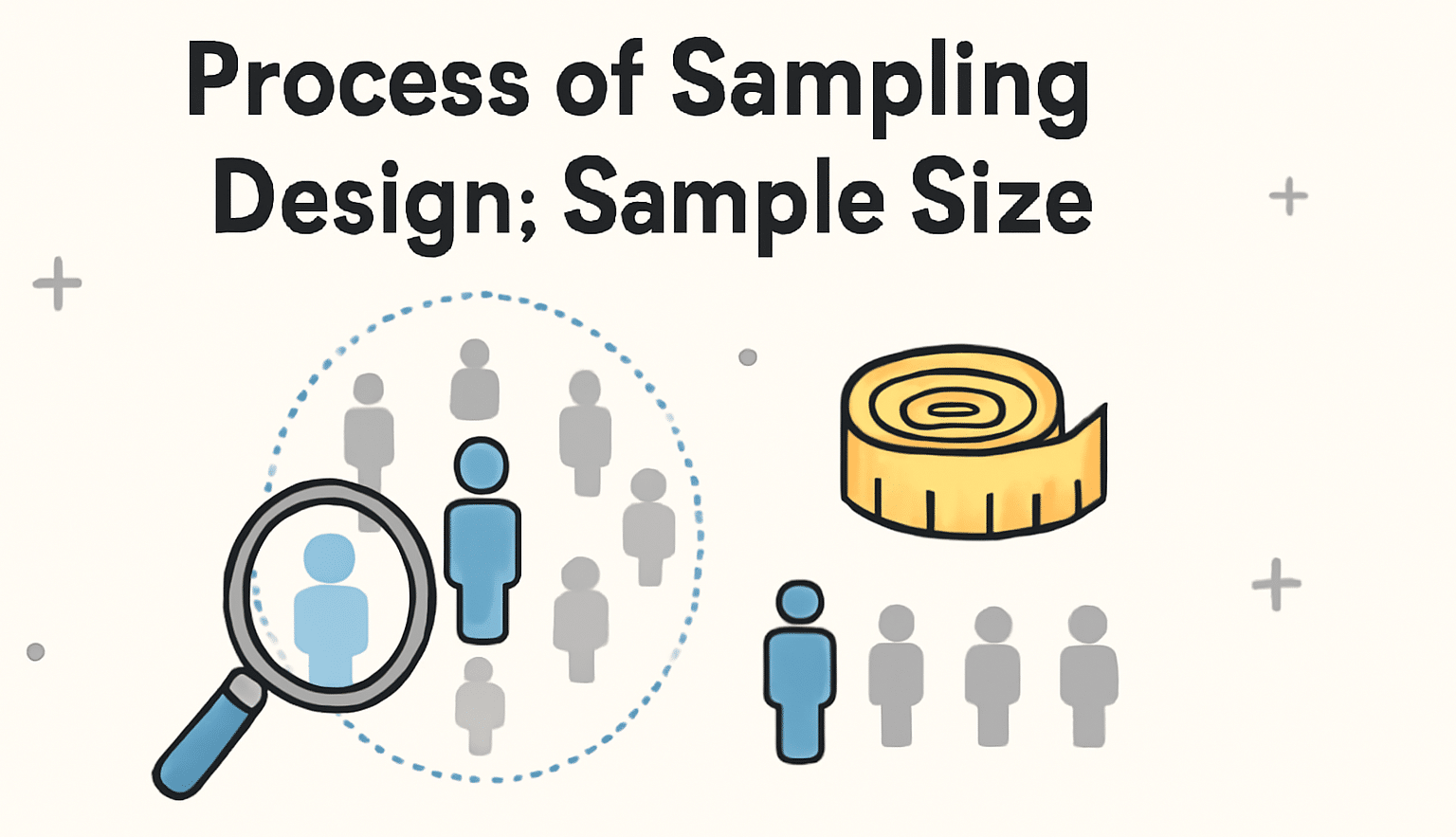The process of choosing a sample from the population for a research project is known as sampling design.
Process of Sampling Design
When creating a sample design, a researcher needs to consider the following factors and adopt the given process.
What is Universe?
One of the first steps in creating a sample design is to determine the population accurately, also referred to as the universe that will be examined. Universes can either be finite or infinite in size. In a finite universe, the number of items is definite, while in an infinite universe, the number of items is limitless, making it impossible to determine the total count.
For instance, the population of a city or the number of workers in a factory. These are considered finite universes. On the other hand, the number of stars in the sky or the throwing of dice serves as an infinite universe. It is important that you now clearly define the area or universe from which your sample is going to be taken from.
Sampling Unit
Before choosing a sample, it is necessary to make a decision regarding the sampling unit. A sampling unit can vary, ranging from a geographical area such as a state, district, or village, to a social unit like a family, school, religious community, or even an individual. Occasionally, the researcher may need to select one or more of these units for their study. This also entails determining all persons, groups, or elements that satisfy any of the characteristics which define the study.
Sampling Frame
The source list is commonly referred to as the “sampling frame” from which the sample will be chosen. The source list includes the names of all the items in a universe. As a researcher, it is crucial to compile a source list even when it is not readily accessible.
The source list needs to be reliable, comprehensive, and appropriate, ensuring that the source list represents the population as much as possible. A sampling frame is defined as the list or a clear representation of all units in the population. It forms the framework on which sample is taken.
Sample Size

The size of the sample is determined by the number of items selected from the universe to create a sample. This poses a significant challenge for a researcher. It is important to ensure that the sample size is optimal. An ideal sample can be described as one that meets the criteria of being representative, reliable, efficient, and flexible. It is important to take into account the size of the population variance, as a larger variance usually requires a larger sample.
It’s important to take into account the size of the population, as this will also impact the sample size. When determining the sample size, it is important to take into account the relevant parameters of interest in the research study. Besides, costs or budgetary constraints also play a crucial role in deciding the sample size. Select sample size taking into some factors such as; research questions, population size, and degree of accuracy.
Sampling Method
Ultimately, the researcher must determine the specific type of sampling technique to use when selecting items for a sample. This technique or procedure itself may reflect the sample design. Researchers have a variety of sample designs to choose from for their studies. It is evident that the researcher should choose a design that, given a specific sample size and budget constraint, results in a smaller margin of error.
Data Collection
Thereafter, apply the selected sampling method to sample the population and get the required sample. After choosing a sample, data can be gathered in accordance with the set out research design.
Criteria for Sample Selection
Here are some important considerations to adopt when deciding on a sample:
Parameters of Interest
It is important to take into account the specific population parameters of interest when deciding on the sample design. For instance, the researcher may be interested in estimating the proportion of individuals with specific characteristics in the population or may want to gather information about certain averages related to the population. The population may also include significant sub-groups that the researcher would want to estimate. Various factors greatly influence the sample design chosen by the researcher.

Budgetary Constraint
From a practical point of view, cost considerations play a significant role in determining both the sample size and the type of sample chosen. Thus, budgetary constraints could also lead to the adoption of a non-probability sample design.
Time Constraints
The choice of type and size of the sample is also influenced by time factors. In the process of selecting a sample, probability sampling methods may not work if a researcher has limited time due to the schedule constraint. In such instances the researcher may decide to use non probability samples or smaller samples for data collection purposes even though the outcome results may less accurate or less generalizable.
Sampling Accuracy
The nature and extent of the required accuracy in terms of estimating population characteristic also affects the sampling technique. When the research calls for higher reliability, the sample size should be bigger and more representation, likelihood sampling techniques. On the other hand, when the aim of the research is set at a level that only requires approximate quantification, a sample may be selected on a small or non-probability basis.
Availability of Data
The influence is best seen in a subsequent section in relation to the availability of reliable and comprehensive data before its use as the sampling frame. At other times, it may not be possible to get a complete source list to enable researchers to use other procedures or change their sample design. For instance, they may use convenient sampling in circumstances where official records are either scarce or old.






